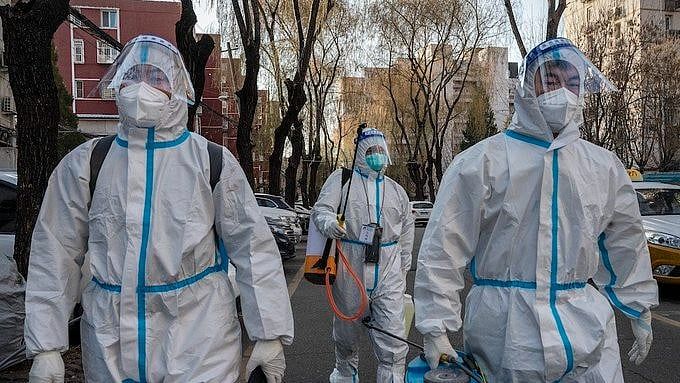
Wuhan: Researchers from China have identified a new bat coronavirus named HKU5-CoV-2, which can potentially infect humans. This virus targets the same receptor as SARS-CoV-2, the virus linked to the COVID-19 pandemic.
The study, led by virologist Shi Zhengli, known for her work on bat coronaviruses, has raised concerns regarding future pandemic risks; however, experts advise that the transmission risk of HKU5-CoV-2 is significantly lower than COVID-19.
BREAKING ⚠️ A new coronavirus with the ability to spread to humans similar to the Covid-19 pandemic has been discovered in China, per researchers at Wuhan Institute of Virology and Newsweek. pic.twitter.com/bgh0FH1muq
— Megh Updates ™ (@MeghUpdates) February 21, 2025
What Is HKU5-CoV-2?
HKU5-CoV-2 is classified within the merbecovirus subgenus, which includes the MERS virus. Initially detected in the Japanese pipistrelle bat in Hong Kong, it has shown the ability to bind to human angiotensin-converting enzyme 2 (ACE2) receptors, akin to SARS-CoV-2.
The research published in the journal Cell indicates that HKU5-CoV-2 can also attach to ACE2 receptors in various mammals, heightening cross-species transmission potential.
JUST IN: New bat coronavirus that has the capacity to spread to humans, similar to the one that caused the COVID-19 pandemic, has been discovered, Newsweek claims. pic.twitter.com/AMUsk7NDEB
— BRICS News (@BRICSinfo) February 21, 2025
How Similar Is It To SARS-CoV-2 Virus That Caused Corona Pandemic?
Despite its similarities to SARS-CoV-2, HKU5-CoV-2 binds to human ACE2 receptors with lower efficiency. Laboratory experiments confirm that while it can infect human cells, its capability for rapid human transmission remains considerably weaker.
Is There Another Pandemic Coming?
Though HKU5-CoV-2 can infect humans in lab conditions, scientists urge against alarmism. They assert that the risk of it causing an epidemic is not as pronounced as COVID-19.
Historical outbreaks like SARS and MERS involved coronaviruses with proficient human-to-human transmission, a trait not currently apparent with HKU5-CoV-2. The research underlines the necessity for ongoing surveillance of emerging coronaviruses, prompting the WHO to prioritize merbecoviruses in pandemic preparedness strategies.